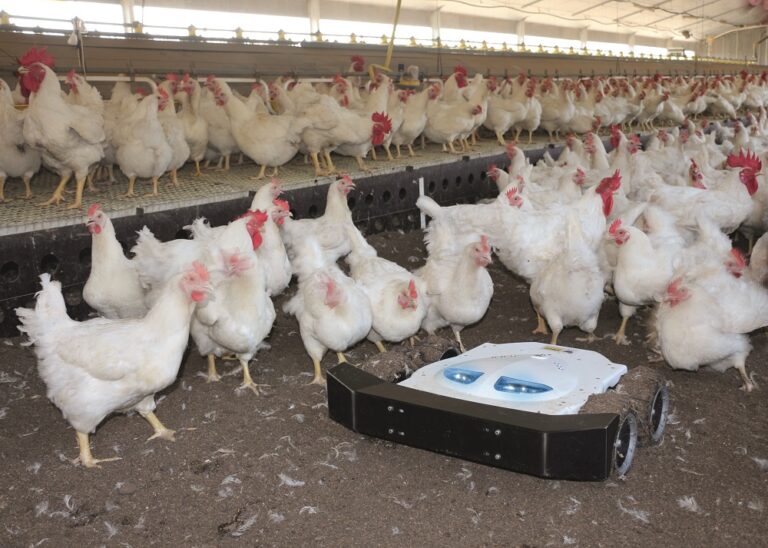The impact of the Spoutnic robot on poultry mating behaviour and fertility has been studied by the Applied Innovation Team at Hubbard. The findings – based on 65 hours of observation – show using the robot for two weeks at the end of a flock leads to increased mating activity by 30% and fertility rates improved by five points.
During the studies conducted by the Applied Innovation Team, Hubbard assessed the impact of the Spoutnic robot on mating and fertility of male and female breeders, without intervening environmental or external factors. Tests were conducted with the robot on two flocks of broiler breeders aged 48 weeks and 55 weeks, respectively.
In order to establish the rate of mating activity during the week preceding the robot installation, an initial observation was conducted over a three-hour period before the lights were turned off. Each mating attempt was rated according to a specific scoring scale consisting of three main categories: successful mating, unsuccessful mating due to a halt in the male’s activity, unsuccessful mating due to female refusal.
Once the robot was installed in the building – operating for eight hours before lights are turned off – the same observer studied the mating activity. The observation was conducted over a two-week period to reduce the impact age could have on results.
The presence of the robot in the building helps maintain hen and rooster activity, resulting in an increase in mating attempts, especially during the last two hours before lights are turned off. In addition to mating observations, the study protocol also included fertility tracking in an aim to establish a correlation between mating activity and flock’s fertility.
Following each observation of mating activity, a sample of 120 eggs were placed in incubation in a 480-egg hatching incubator to assess the percentage of clear eggs (infertile or early dead embryos). This reduced any factors linked to transportation or storing that may have affected the study.
The study showed a decrease in fertility during the first week of the robot’s presence. Presumably, birds over 45 weeks of age require a period of adaptation to the robot as they had never seen one before. “This reaction would most likely have been avoided with animals already accustomed to robots at the start of the flock,” said Yanne Courcoux, chief executive and co-founder of TIBOT Technologies. Two weeks after the robot was introduced into the poultry shed, fertility rates stabilised or increased to offset the natural loss of the flock’s fertility. Moreover, the Hubbard team observed a five-point increase in the number of fertilised eggs in the flock of birds over 55 weeks.


